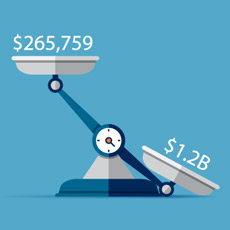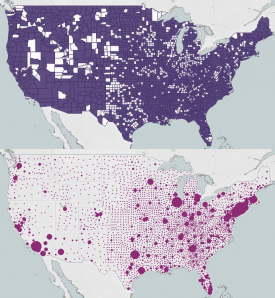By: Cara Murez
Murez
TUESDAY, Jan. 5, 2021 (HealthDay News) — In late December, Dr. Ada Stewart asked her staff to check on a patient who had missed an appointment.
She soon learned that the patient had no transportation for the 45-minute drive, so Stewart offered to conduct the appointment by phone instead.
“It still accomplished so much. I was able to see how their diabetes was doing, how they were preparing for the holiday season, how they were really feeling mentally,” said Stewart, a family physician at Eau Claire Cooperative Health Centers in Columbia, S.C., and president of the American Academy of Family Physicians.
That’s just one example of how doctors are using telemedicine – having appointments by phone or video call – to check in with their patients.
Telemedicine isn’t new, but the COVID-19 pandemic has really put the technology front and center, with clinics closing for certain services after state and local governments issued stay-at-home orders to help prevent the spread of the virus.
And even when doctors’ offices were open, some patients avoided in-person appointments due to COVID-19 fears.
Besides giving telemedicine a boost, the pandemic has also fostered the rise of innovative medical services, everything from getting prescriptions by mail to drive-through virus testing and pharmacy-based vaccinations.
Many of those innovative approaches to health care are likely to linger long after the pandemic ebbs, experts say.
“We saw the benefits that telehealth provided,” Stewart said. “People were able to receive access to health care. We were able to reach out to our patients who were afraid to come into the office to be seen. It really afforded that opportunity to still take care of our patients and do so in a safe way.”
Telemedicine also gave physicians the ability to keep their practices, which might otherwise have been shuttered as patients stayed home.
“We had to pivot,” Stewart explained. “We had always talked about telehealth and incorporating it into our practices,” but 2020 brought the technology to the fore.
The American Academy of Family Physicians distinguishes between telehealth and telemedicine. Telemedicine, the academy says, is using technology to deliver care from a distance, whereas telehealth is the technology and services to provide that distance care.
Prior to the pandemic, telemedicine was already growing in the United States, especially in mental health services. But it still only reached a small minority of patients, about 4% of the population, according to Lori Uscher-Pines, a senior policy researcher at the nonprofit RAND Corporation, which works to impact policy through research and analysis.
Restrictions on telemedicine delivery were a major barrier to growth. For example, many insurance providers would only reimburse telemedicine visits under specific circumstances.
However, “at the start of the public health emergency, payers across the board really relaxed restrictions on telemedicine, so patients could be served at home and that would support social distancing and help patients continue to get the care that they need,” Uscher-Pines said. “As a result, we’ve seen telemedicine use really skyrocket.”
Enhancing, not replacing, in-person care
A study recently published in JAMA Network Open evaluated how health services changed in March and April 2020, during the early part of the pandemic in the United States, among 6.8 million people covered by commercial insurance.
The study found that use of in-person medical services dropped by 23% in March and 52% in April, and that telemedicine services grew by more than 1000% in March and more than 4000% in April.
That doesn’t mean telemedicine completely replaced in-person care: The increase in telemedicine only offset about 40% of the decline in office visits.
Prior to the pandemic, Deidre Keeves and her team at UCLA Health in Los Angeles had been trying to get physicians to increase their use of video visits with modest success, averaging about 100 visits per day for several months. But from March through May of 2020 they jumped to 3,000 to 4,000 visits per day, Keeves said.
More recently, UCLA Health doctors were doing about 2,700 telemedicine visits a day. Keeves said she expects that pace to continue averaging that number, even once the pandemic is under control.
She sees telehealth as beneficial for patients, who save on time and travel, as well as for physicians, who can reach a geographically wider population.
“We think that telehealth is here to stay. Our patients are expecting it. Our doctors are very happy with it, and it’s a great avenue for care,” said Keeves, who is director of connected health applications at UCLA Health. “We’re expecting that about 20% of our volume is going to continue to be through telehealth.”
In-person visits continue to be necessary anytime a person needs a procedure, such as a biopsy, lab test or vaccine injection, Keeves said. Telehealth works for follow-up visits, medication instructions and talking with a mental health provider.
UCLA Health is located in Southern California, a current crisis area for COVID-19. Keeves said staff are also monitoring some coronavirus patients at home with the use of pulse oximetry (which measures blood oxygen levels) and regular check-ins with clinicians.
“We at UCLA Health don’t feel that video visits are a replacement for in-person care,” Keeves stressed. “We are not using technology to replace the doctor-patient relationship. We’re using technology to supplement and support that relationship.”
Direct-to-consumer safety valve
What’s known as “direct-to-consumer” telemedicine was also growing even before the pandemic, Uscher-Pines added. That involves scheduling a visit with a doctor who works for an online-only service provider. It’s typically used when someone has a minor acute illness, not a severe condition.
Uscher-Pines was an author on a study that appeared recently in the Journal of Medical Internet Research. The study focused on the experiences of one such telemedicine supplier, called Doctor On Demand, a national telehealth service provider.
Researchers compared data from February to June in 2019 and February to June 2020. They found that total visit volume increased from March through April 7, 2020, by 59% above the baseline, before declining to 15% above the baseline through the week of June 2, 2020. The growth wasn’t typically fueled by COVID-19 concerns, but rather by visits for issues of behavioral health and chronic illness.
In this way, “telehealth services may play a role as a ‘safety valve’ for patients who have difficulty accessing care during a public health emergency,” the study concluded.
Pharmacies also fill gaps
Other innovations that have expanded during the pandemic range from drive-through COVID-19 testing to pharmacy-based vaccinations for younger children.
In August, the U.S. Department of Health and Human Services (HHS) authorized state-licensed pharmacists to vaccinate children age 3 and up. That followed a U.S. Centers for Disease Control and Prevention report, issued in May 2020, that found a “troubling drop” in routine immunizations for children.
“What I love about pharmacy is we’ve really stepped up to be a very essential access point for people when a lot of other things might have been closed,” said Sandra Leal, president-elect of the American Pharmacists Association and executive vice president of SinfoniaRx, which works with health plans to do comprehensive medication reviews with patients via telehealth.
Another change Leal noted is that pharmacists can now conduct COVID-19 testing within their communities. In April, HHS allowed licensed pharmacists to test patients for COVID-19.
As the pandemic forced office closures, SinfoniaRx’s team worked with patients to do not only the usual work of ensuring they had no medication questions, but also talking about COVID-19.
“We’re finding that so many people have so many questions around COVID and the pandemic, and vaccines and when they’re going to be available to them,” Leal said. “We’re really trying to address those concerns.”
Ordering prescriptions by mail is a service that’s been around for a long time, Leal said. In May, the Wall Street Journal reported that mail-order prescriptions had risen 21% over the previous year during the last week in March. Yet, Leal said patients are concerned about postal delays, which can be a big problem for people with certain conditions, such as people with type 1 diabetes who need insulin.
Future depends on policy
The COVID-19 pandemic has highlighted health inequities, and the shift to a broader acceptance of telemedicine is an opportunity to improve health care in the United States, Stewart said. She would like to see telemedicine continue, along with the technology infrastructure to ensure that health care is equitable.
Uscher-Pines said that it may be difficult to return to the pre-pandemic status quo, with its focus on office visits, because providers and patients are now familiar with and appreciate the convenience of telemedicine.
“I think that what ultimately happens with telemedicine really depends on how the policy environment evolves,” she said. “There is a lot of action going on at both the state and federal level right now on telemedicine policy, and a lot of strategizing on what should stay permanent and what should go back.”
More information
The U.S. Centers for Disease Control and Prevention has more on telemedicine during COVID-19.
SOURCES: Ada Stewart, MD, family physician, Eau Claire Cooperative Health Centers, Columbia, S.C., and president, American Academy of Family Physicians; Lori Uscher-Pines, PhD, senior policy researcher and research quality assurance manager, RAND Corporation; Deidre Keeves, PT, director of connected health applications, UCLA Health, Los Angeles; Sandra Leal, PharmD, executive vice president, SinfoniaRx and president-elect, American Pharmacists Association; JAMA Network Open, Nov. 5, 2020, online; Journal of Medical Internet Research, Dec. 15, 2020, online; U.S. Department of Health and Human Services, Aug. 19, 2020; American Pharmacists Association, Nov. 4, 2020; Wall Street Journal, May 12, 2020





